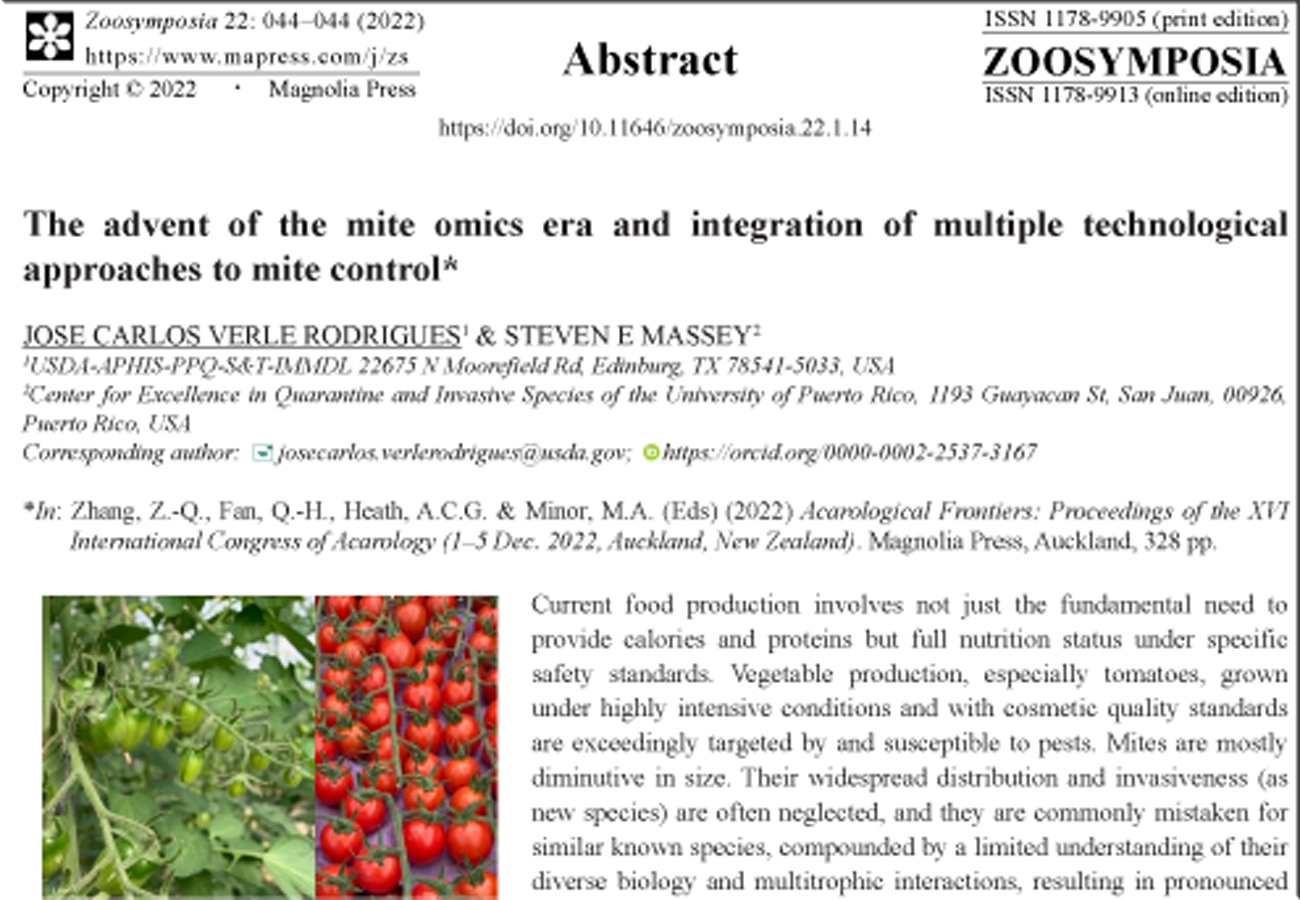Abstract
Current food production involves not just the fundamental need to provide calories and proteins but full nutrition status under specific safety standards. Vegetable production, especially tomatoes, grown under highly intensive conditions and with cosmetic quality standards are exceedingly targeted by and susceptible to pests. Mites are mostly diminutive in size. Their widespread distribution and invasiveness (as new species) are often neglected, and they are commonly mistaken for similar known species, compounded by a limited understanding of their diverse biology and multitrophic interactions, resulting in pronounced crop losses due to late action.
References
Grbić, M., Van Leeuwen, T., Clark, R. M., Rombauts, S., Rouzé, P., Grbić, V., Osborne, E.J., Dermauw, W., Ngoc, P.C.T., Ortego F., Hernández-Crespo P., Diaz I., Martinez M., Navajas M, Sucena E., Magalhães S, Nagy L., Pace M.R., Djuranović S., Smagghe G., Iga M., Olivier Christiaens O., Veenstra J.A., John Ewer J., Rodrigo Mancilla Villalobos R. M., Jeffrey L. Hutter, Hudson S.D., Marisela Velez M., Yi S.V., Zeng J., Pires-daSilva A., Roch F., Cazaux M., Navarro M., Zhurov V., Acevedo G., Bjelica A., Fawcett J.A., Bonnet E., Martens C., Baele G., Lothar Wissler L., Sanchez-Rodriguez A., Tirry L., Blais C., Demeestere K., Henz S.R., Gregory T.R., Mathieu J., Verdon L., Farinelli L., Schmutz J., Lindquist E., Feyereisen R. & Verdon, L. (2011) The genome of Tetranychus urticae reveals herbivorous pest adaptations. Nature, 479(7374), 487–492
Rodrigues, J.C.V., Ospina, O.E. & Massey, S.E. (2019) Mycobiome of Brevipalpus mite strains and insights on metabolic function in the bacteriome of the Tetranychoidea mites. In: Skvarla M.J., Ochoa R., Rodrigues J.C.V. & Hutcheson H.J. Contemporary acarology. Springer, Cham, pp. 79–91.


